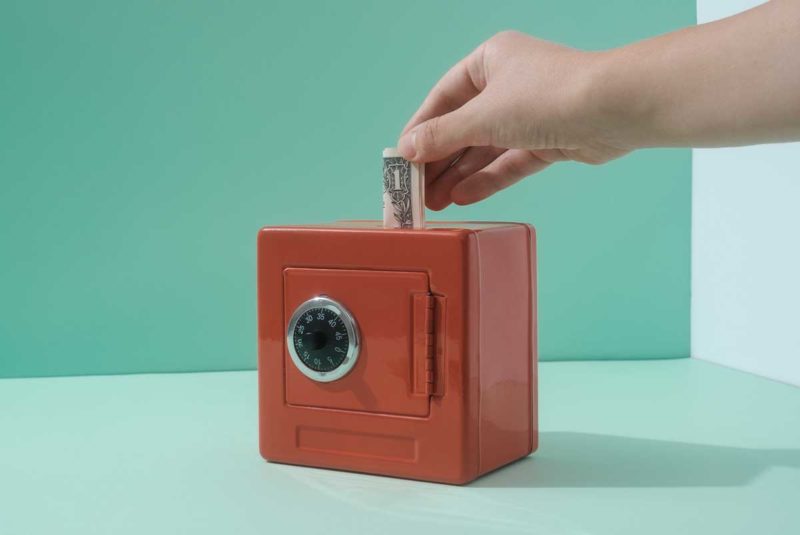When you get a new credit card, you’ll often see a range of numbers: minimum monthly payments, due dates, balance transfer fees, and something called the “annual percentage rate” (APR).
You may have heard of APRs when it comes to home loans — and if you’re a veteran home buyer, you know they’re not the same as interest rates.
But what about credit cards? How do issuers calculate their APR vs. interest rate? And does it matter?
APR vs. Interest Rate for Credit Cards: What’s the Difference?
Lenders calculate APR by combining the cost of interest plus the cost of fees, resulting in a number that’s essentially the cost of borrowing money. The Truth in Lending Act requires lenders to advertise a loan’s APR — as opposed to its interest rate — because it’s a more accurate reflection of the loan’s total cost.
Your monthly mortgage payment, for example, might include an array of finance charges, from your loan origination fee to your mortgage insurance to closing costs. All those fees, plus interest, must be included in the APR disclosed by the lender.
But whereas interest and APR are different for mortgage loans, they’re interchangeable when it comes to credit cards.
You don’t pay an origination fee with credit cards, and most of the other fees are optional. (You’ll pay annual fees whether or not you make purchases, so they’re not a cost of borrowing — and aren’t included in APRs.)
The bottom line: With credit cards, your APR is the same as your interest rate.
That doesn’t mean credit cards are free beyond interest fees, though. Their additional costs can include:
- Annual fees: Charged once a year for the perks of using a card
- Cash advance fees: Charged when you take out cash using your card’s line of credit (which we don’t recommend)
- Balance transfer fees: Charged when you transfer a balance from one account to another (People do this to move a balance from a high APR account to a low APR account.)
- Foreign transaction fees: Charged when you make a purchase in another currency (The best travel cards are free of these fees.)
Your Credit Card’s APR
Your credit scores affect a range of things, including your ability to get a home mortgage or credit card, the size of your credit line — and, you guessed it, your APR.
You can see your credit card’s APR by looking at the last page of your statement. Different rates apply to different credit card balances, which come from different activities. They include:
- Purchase APR: This is what you’ll pay on everyday credit card purchases (usually 8 – 25%).
- Introductory APR: Some cards offer this on purchases or balance transfers for a limited time (usually at least a year, and usually 0%).
- Balance transfer APR: What you pay when you transfer a balance from one card to another (usually 8 – 25%).
- Cash advance APR: What you pay when you borrow money at an ATM with your credit card (usually around 25%).
- Penalty APR: If you pay more than 60 days late, the card issuers may implement a high penalty APR on your balance (usually 29.99%).
When applying for a credit card, you can check all the APRs and fees in a designated card summary, known as a Schumer Box.
Will My Credit Card’s APR Change?
Most credit card APRs are variable (which makes them very different from, say, a 30-year fixed-rate mortgage).
Here are three situations in which your APR might change:
- The prime rate goes up or down: You’ve probably heard that the Fed determines interest rates. What you might not know is your credit card’s APR is based on this rate — and if it changes, your credit card’s APR usually will, too.
- Your creditworthiness changes: Since your APR is based on your creditworthiness, card issuers may adjust your APR if your credit history changes significantly.
- You’re irresponsible with your card: If you make bad decisions with your credit card (for example, pay more than 60 days late), your card issuer might assess a “penalty APR” that’s higher than your normal rate. After six months, it must reevaluate — so you should make six on-time payments and then ask to return to a lower rate.
When Credit Card APRs Don’t Matter
Although lower interest rates are always attractive when you’re borrowing money, they don’t have to matter for credit cards.
Because, when you use a credit card strategically, you can avoid paying interest completely.
Most credit card issuers offer a “grace period” after you make new purchases, which means you won’t accrue interest charges until after your statement’s due date. If you pay off your credit card’s statement balance each month, you’ll never pay interest on your purchases with most cards.
By only spending what you can afford to pay off in full each month, you’ll reap the benefits of using a credit card — rewards, security, credit building — without incurring additional costs.
The Short Version
- Interest and APR are different for mortgage loans, but they’re interchangeable when it comes to credit cards
- Your credit scores affect a range of things, including your ability to get a home mortgage or credit card, the size of your credit line, and your APR
- Most credit card APRs are variable (which makes them very different from, say, a 30-year fixed-rate mortgage)




